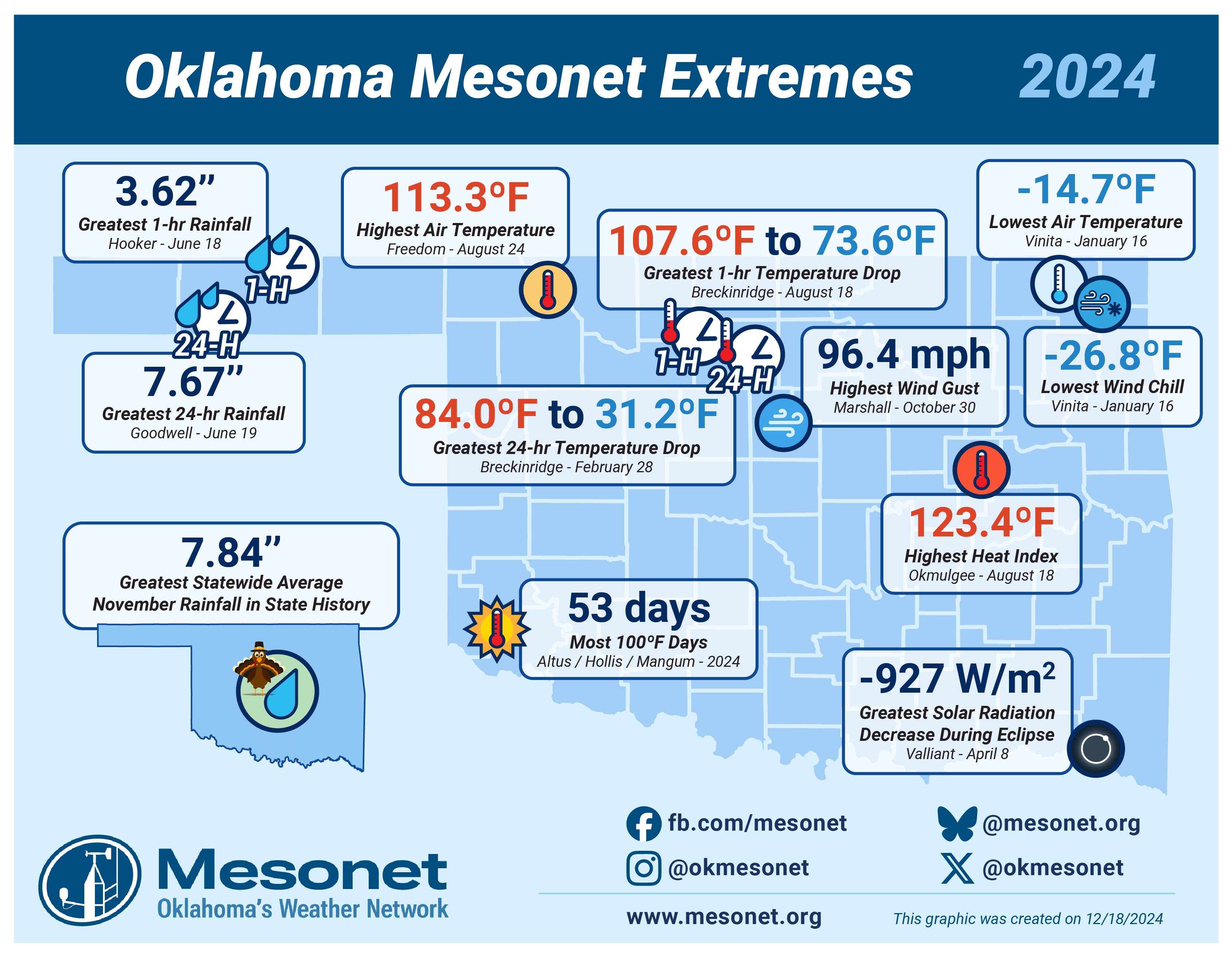Oklahoma Weather Records Fall in 2024
It seems every year is a momentous one for weather in Oklahoma, and 2024 was no exception, with two all-time records either tied or broken during the year. The National Weather Service (NWS) confirmed at least 152 tornadoes touched down in Oklahoma, surpassing the previous record of 149 set in 2019. This year’s total was bolstered by record-breaking monthly totals of 56 in April and 33 in November. Most of the tornadoes were of the weaker EF0 and EF1 variety, accounting for 34 and 71 events, respectively.
